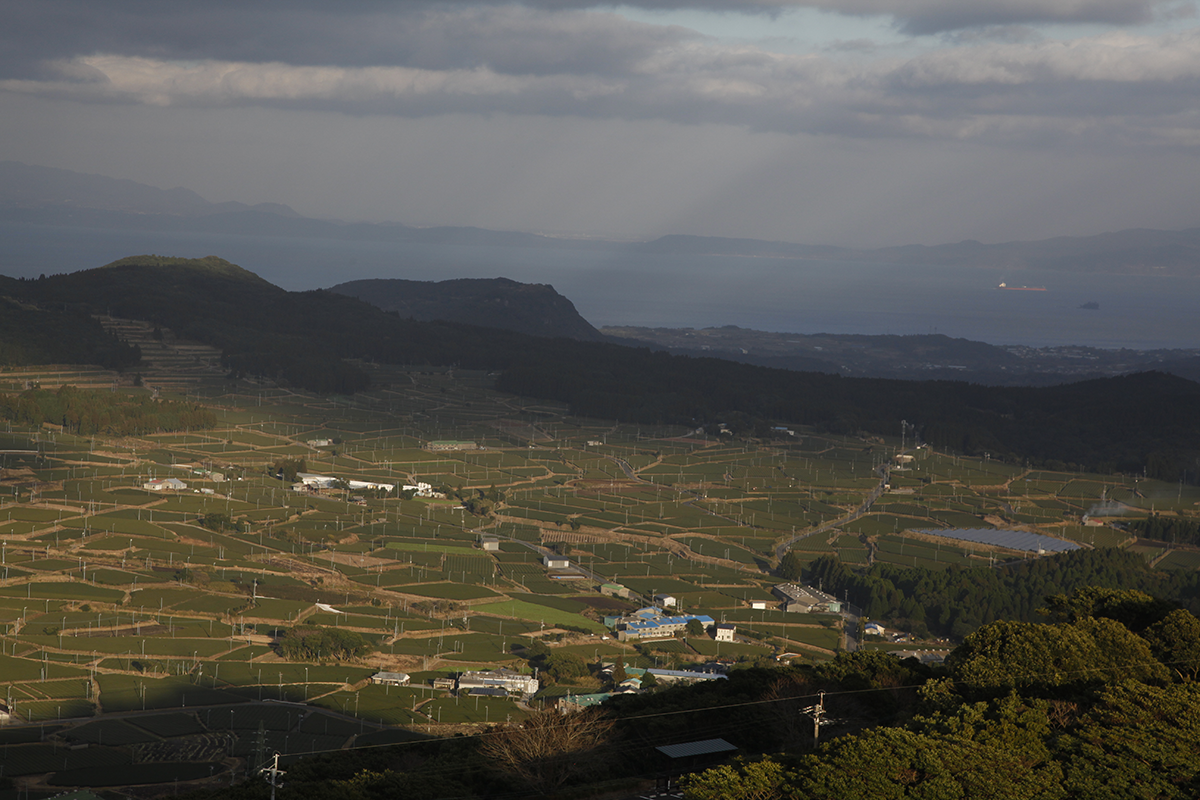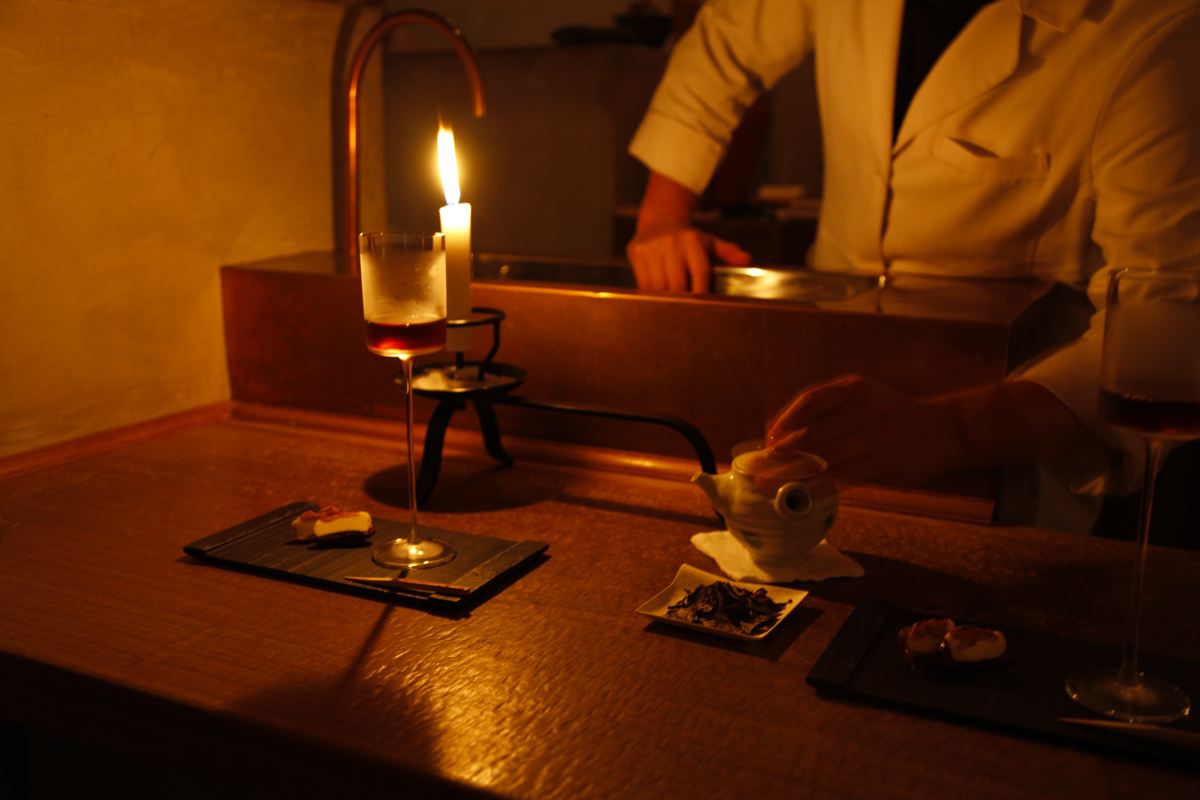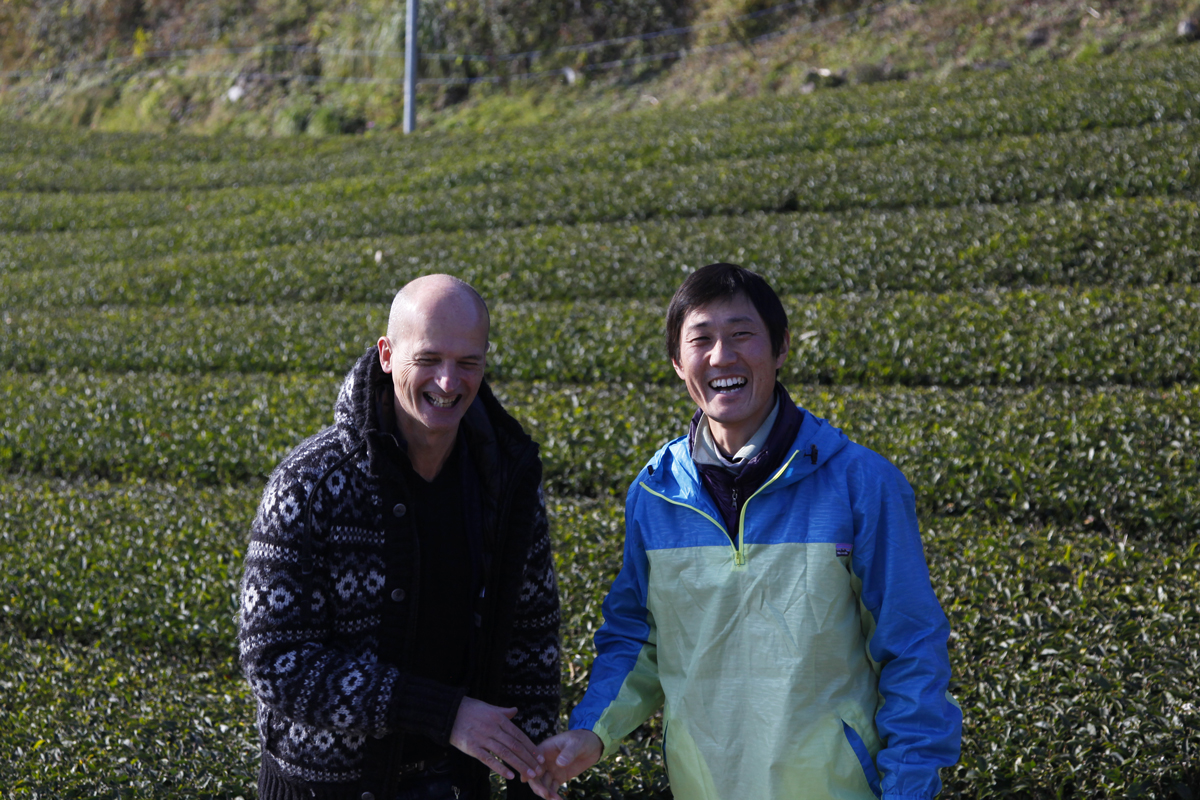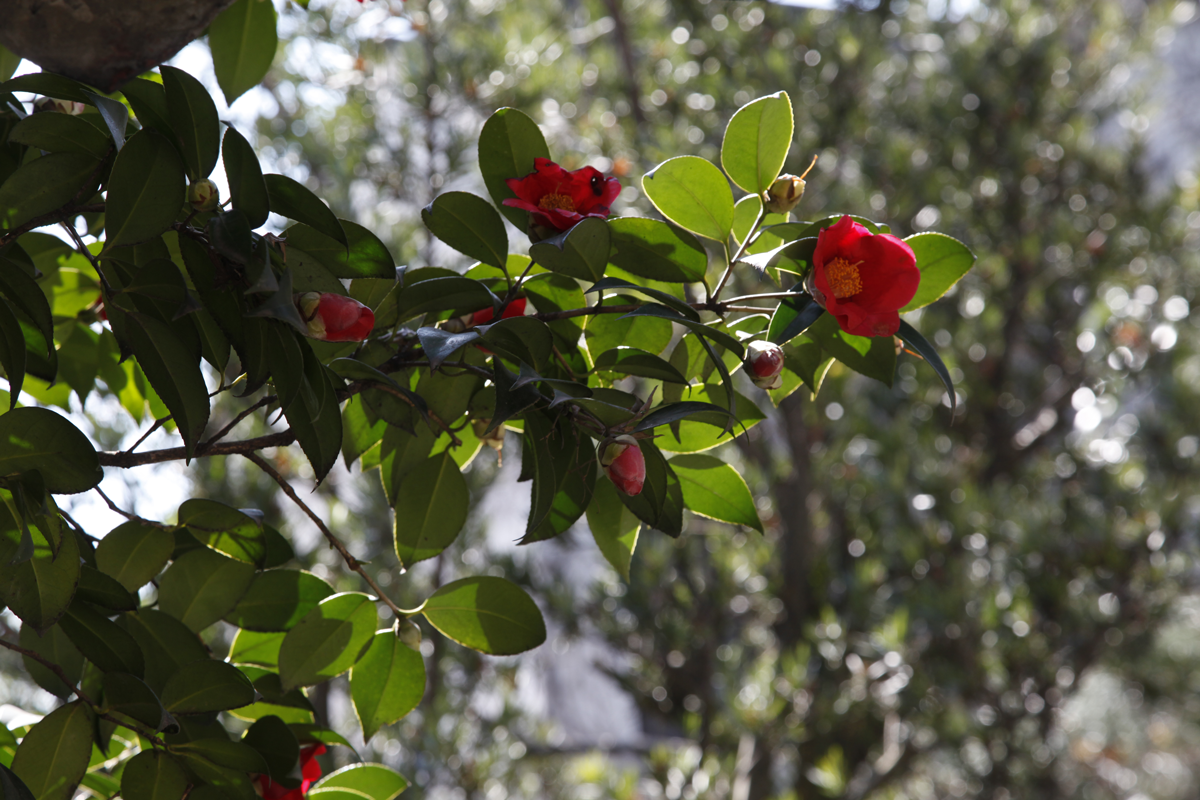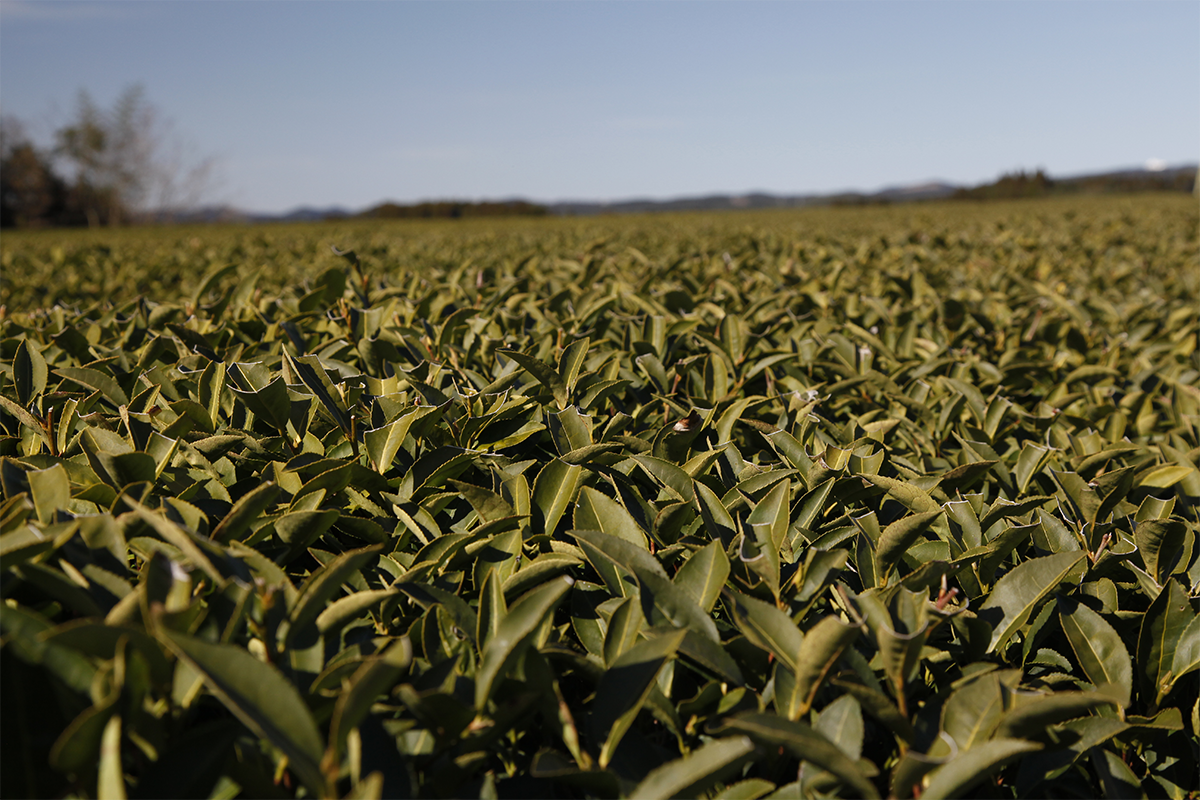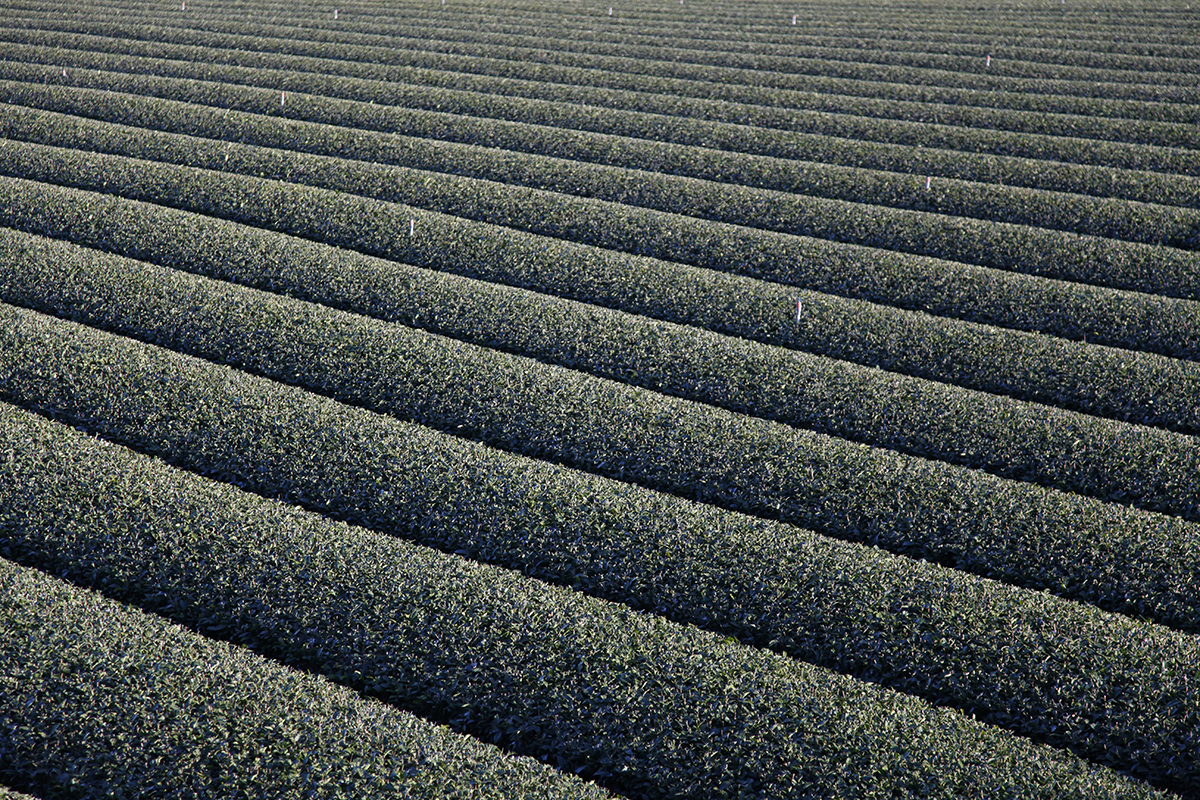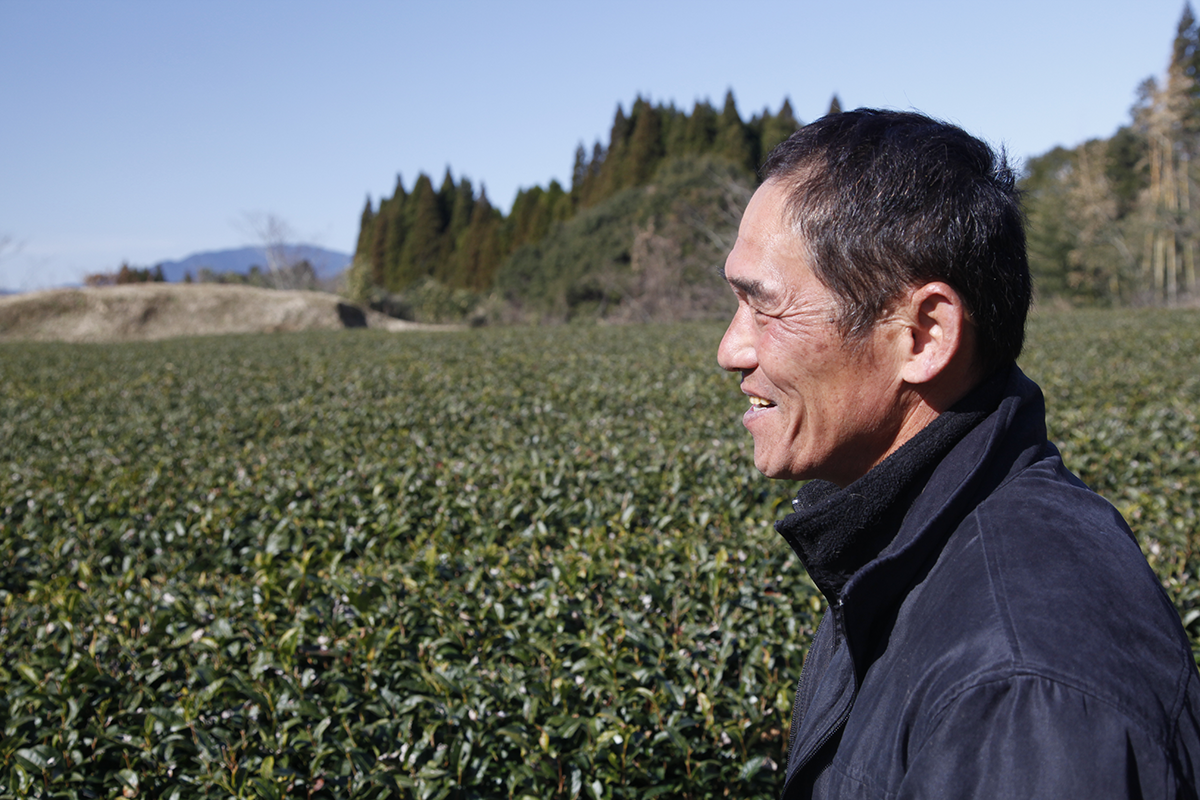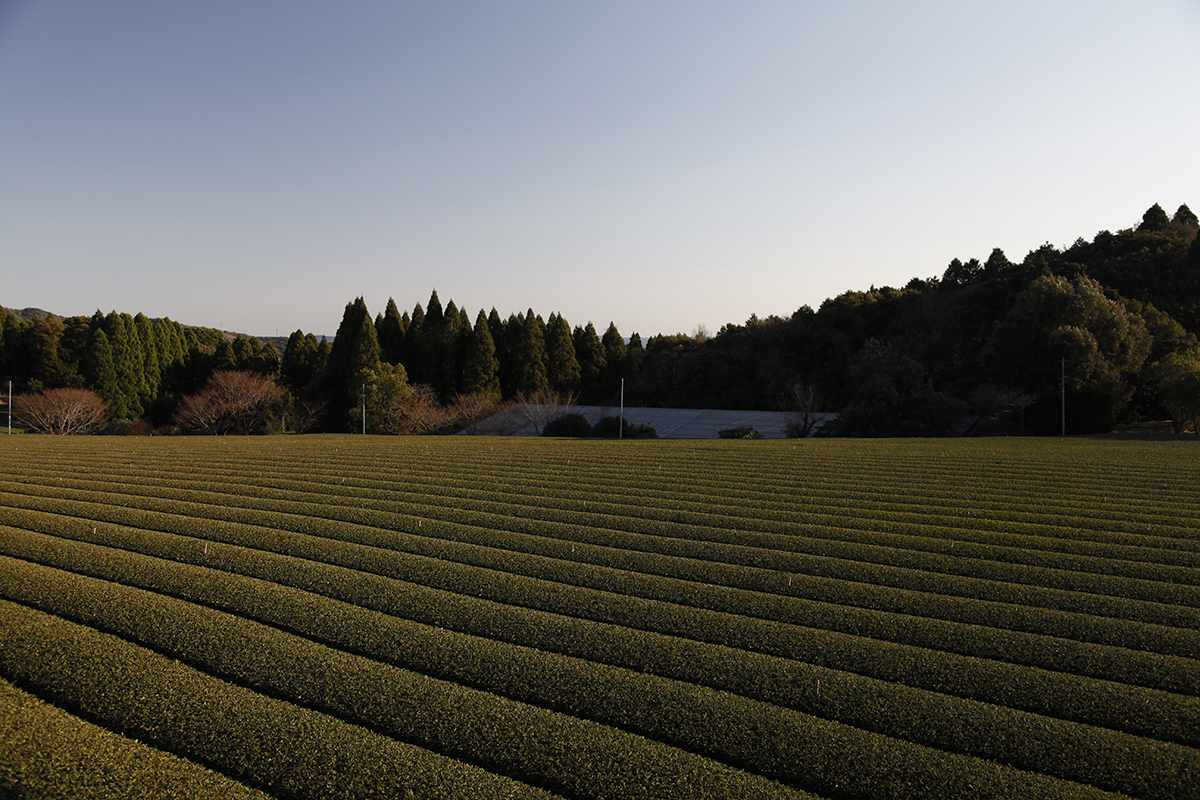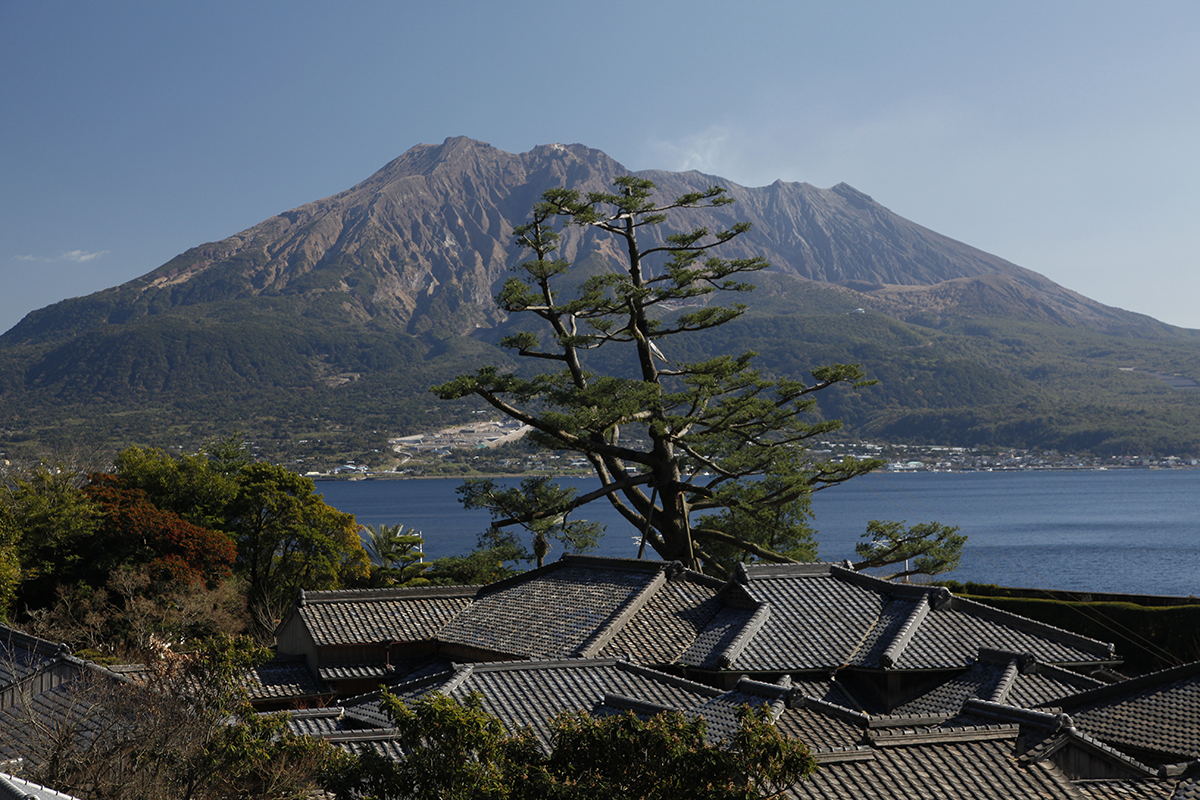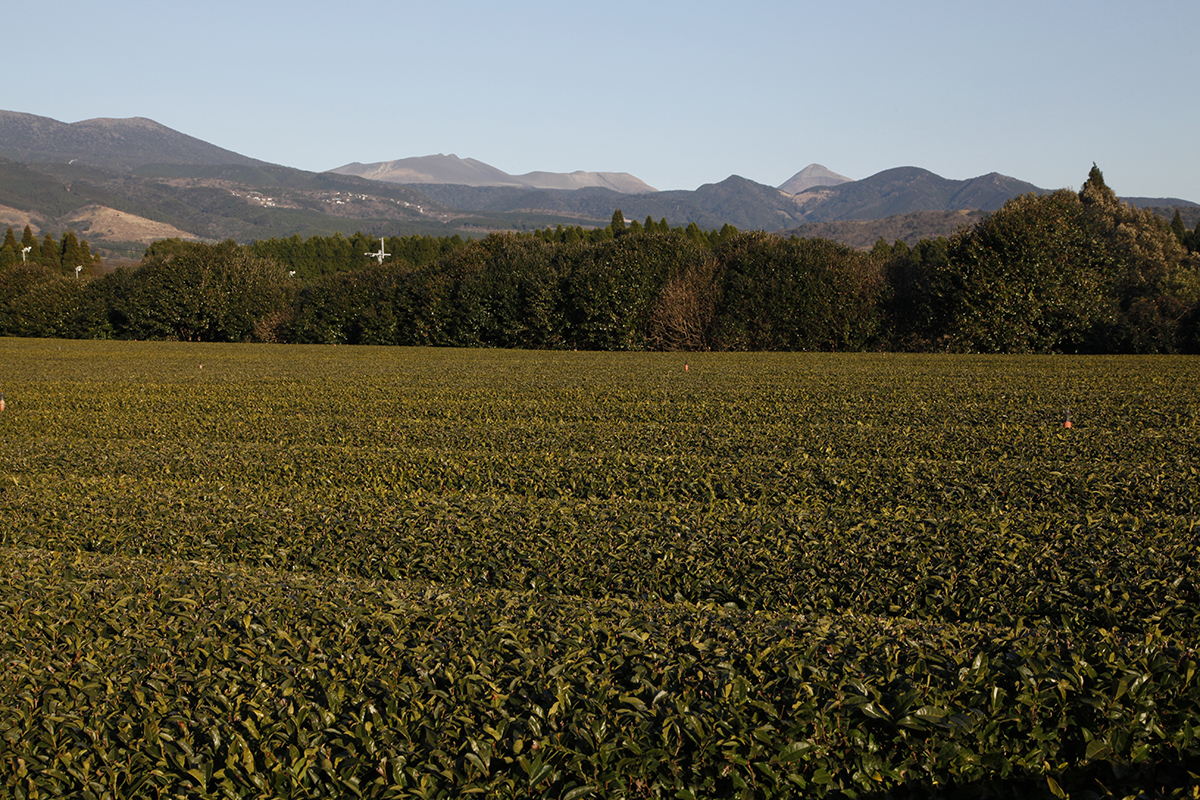Right down to the extreme south of Japan you can find these tea fields. They are recognisable for being spiked with fans, which are installed to prevent cold air from lingering around the tea plants. Here, I’m close to Kagoshima Bay, visible in the background, an important tea-producing region in the archipelago.
Japan
Yorozu in Fukuoka, a unique experience
The Japanese city of Fukuoka may not get many Western tourists, but if you go there and you like new gastronomical experiences, you should go to Yorozu. You need to book in advance, you need to speak Japanese, or go with someone who speaks the language, it’s essential, and you need a couple of hours free. Then, let yourself be guided, and Suguru Tokubuchi will introduce you to pairings of food with tea and various alcohols, dishes prepared in front of you in an intimate setting, which makes every sip even more precious, every mouthful chosen to accompany one of the cocktails. It’s a unique experience.
In Japan, organic farmers, father and son
I’d like to introduce you to Kitano Shuichi. Of all the farmers I’ve met in Japan, he’s the most passionate and inspiring about organic practices. He’s been using these methods for 30 years, introduced by his father. The latter, convinced of the health benefits of organic tea, suffered financially for ten years, due to very low yields, but he pulled through. Today, he sells his tea for a good price because demand for organic tea is higher. Kitano Shuichi and his father make their own compost, while others buy it in from outside. But most significantly, they never use anything to do with animals in their compost. So that means no cow manure, for example. They believe in biodynamic methods and use them successfully. They’re so proud of their compost they insist you taste it. But if you want to know their exact recipe, you can ask all you like but they’ll reveal nothing save their good humour, with a smile.
There’s a spring tea for everyone
For those who want to try spring – or first-flush – teas, here are some tips. Darjeelings harvested in March and April develop sustained floral notes accompanied by a touch of astringency and bitterness. For a combination of brioche and floral aromas, try Nepalese first-flush teas, which are harvested from the start of April. Those who enjoy chestnut, mineral and vegetal notes would do well with new-season Chinese teas. (The rarest and most sought after, and therefore the most expensive, are those known as pre-Qingming teas, harvested before Chinese Tomb-Sweeping Day which takes place at the beginning of April). Lastly, for fans of iodine, cut grass and steamed vegetable notes, Japanese Ichibanchas are a pure delight. They are harvested between the end of April and the middle of May. Of course I haven’t covered them all here, and there are other countries to discover, but if we are talking about springtime and nature reawakening, and you want teas that evoke gardens and rising sap, these are the ones I think of first.
Japan, the end of the single variety
Last week I talked about how the mixing of tea leaves by Japanese co-operatives can limit the range of flavours in the country’s teas, but there are also some very positive developments coming from Japan. For example, a few decades ago, the country could be described as mono-cultivar: the vast majority of growers used the Yabukita variety. Happily, today, there are an increasing number of cultivars used in Japan, such as sae-midori, oku-hikari and asatsuyu. A greater range of cultivars means that once the tea is infused, it produces a wider palette of aromas and flavours. And that is good news for tea lovers.
Combining leaves limits flavour variety
I have a regret when it comes to Japanese teas. My Japanese friends know it and share it. It is this: in Japan, few farmers produce finished tea. They are not usually set up to do this in terms of equipment. Most farmers focus on growing the best possible tea and harvesting it at the optimal time, but then they immediately sell the fresh leaves to co-operatives, who finish the production process. However, these co-operatives don’t keep the batches separate so they can process them individually. They put all the tea harvested by different farmers together. This results in a certain uniformity of flavour, whereas if each farmer took care of the production process right to the end, we would undoubtedly get a wider variety of flavours and aromas.
Mr Kumada, a farmer attached to his land
I’d like to introduce you to Mr Kumada. He lives with eight cats and grows tea on seven hectares in the extreme south of Japan, high above the city of Kagoshima, far from anywhere, even the smallest village. Mr Kumada took over from his father, who was also a farmer. But he only grows tea, unlike his father who also grew tobacco, and raised cows, pigs and silkworms. When I asked him what he’d like me to talk about on my blog, Mr Kumada immediately replied that he was proud of his farming methods, and of the organic certification he has obtained. He wants to keep the environment in the best possible condition; he is responsible for it, he says.
Mr Kumada produces green teas, of course, but also a black tea, which I’ve just chosen. It’s the first time I’ve tasted such a good black tea from Japan, an interesting tasting experience. Mr Kumada’s very likeable personality does play a part in my choice: I taste all teas blind, but it increases the pleasure I take in being able to promote his excellent tea.
In Japan, tea is harvested three or four times a year
In Japan, harvesting is often done by machine due to the high cost of labour. So instead of picking the leaves every week, as is the practice in some parts of the world, they are harvested three times a year, in spring, summer and autumn. On the island of Kyushu, which is hotter than the islands further north, tea can be harvested four times a year – in April, June, August and October. The most prized harvest is the first one, known here and elsewhere in Japan as Ichibancha.
Sakurajima
Tomorrow I’m leaving Japan and this island of Kyushu I love, this city of Kagoshima, this region of volcanoes, some of the most active on the archipelago. I’m leaving these beautiful and remote tea fields in the mountains, and I’ll show you some photos of them soon. But today I want to share with you my favourite photo, it’s of a volcano called Sakurajima, and I took it while at the Senga-en garden north of Kagoshima. This is one of the most beautiful bays in the world, and here, tea grows inland as well as on some of the islands that lie off the coast. Green tea, of course, but also some black teas that aren’t always necessarily that special but are starting to sell as far away as Tokyo.
A volcanic plantation
In the far south of Japan, the tea fields’ proximity to active volcanoes means the leaves have to be treated in a special way. Several times a year, the volcanoes spew out ash that is deposited on the surrounding land. So once the leaves have been harvested, they are rinsed before the first stage in processing: steaming. The rinsing in cold water lasts for 30 minutes and no longer, to minimise the loss of aromatic compounds.

